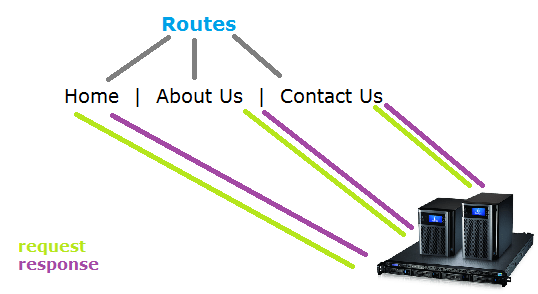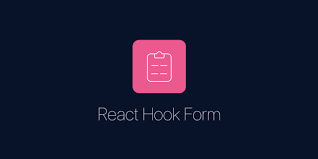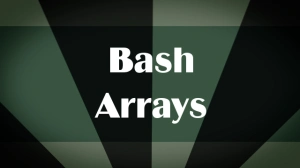A router is a JavaScript object that maps URLs to functions. The router calls a function based on the URL.
In the past, a web application was a series of interconnected pages. This could either be static pages or dynamic pages that are generated on the server.
A single-page web application was a new concept where the app’s life span revolved around a single HTML document.
Web pages were then replaced by views. In most web frameworks, links are no longer used to generate and navigate between pages, instead, they are bound to views.
A view is a JavaScript object that contains the logic for a single web page. The view handles page rendering and user input. All views are controlled by the router.
The concept
A router watches for changes in the URL and calls the appropriate function. The method is then responsible for rendering the view.
Consider a router as one big function that handles all the routing logic. The router calls some pre-defined functions in the application.
For example, if the URL is /about, the router will call the about function. The invoked method will call other functions that deal with data or DOM manipulation.
A view can be as simple as a function that creates a div element and appends it to the body.
To demonstrate this concept, let’s create a simple router in JavaScript.
Create two files:
index.htmlscript.js
In your index.html, create a div with the id: “app”. Also, link the script.js file.
<div id="app"></div>
<script src="./script.js"></script>
That’s all for the index.html file.
In your script.js file, create two objects to hold the routes and the template functions that will be rendered.
let routes = {};
let templates = {};
Then create two functions to display the home and about pages. Though arrow functions can be used to define these methods, we’ll use regular functions for simplicity.
let app_div = document.getElementById('app');
function home() {
let div = document.createElement('div');
let link = document.createElement('a');
link.href = '#/about';
link.innerText = 'About';
div.innerHTML = '<h1>Home</h1>';
div.appendChild(link);
app_div.appendChild(div);
};
function about() {
let div = document.createElement('div');
let link = document.createElement('a');
link.href = '#/';
link.innerText = 'Home';
div.innerHTML = '<h1>About</h1>';
div.appendChild(link);
app_div.appendChild(div);
};
We then define the routes. A route is defined by a path and a template to be rendered. A template can be a function to create the DOM elements or a file name (string).
function route (path, template) {
if (typeof template === 'function') {
return routes[path] = template;
}
else if (typeof template === 'string') {
return routes[path] = templates[template];
} else {
return;
};
};
The route function takes two arguments: 1. path: the path to be mapped to the template. 2. template: the template to be rendered.
We check if the template is a function or a string. If it’s a function, we store it in the routes object. If it’s a string, we store the template function in the templates object.
The next step is to register a function that will act as a template engine.
function template (name, templateFunction) {
return templates[name] = templateFunction;
};
The template function takes two arguments:
name: the name of the template.templateFunction: the function that will create the DOM elements.
Now you can map a template to a route, as shown below:
template('home', function(){
home();
});
template('about', function(){
about();
});
We map the home template to the /home route and the /about template to the about route.
Then define the route to template mapping:
route('/', 'home');
route('/about', 'about');
We match the template names to the functions that will create and append the DOM elements to the app div.
All we need to do is to detect and resolve the changes in the URL to render the correct template, as demonstrated below:
function resolveRoute(route) {
try {
return routes[route];
} catch (e) {
throw new Error(`Route ${route} not found`);
};
};
The resolveRoute method returns the template function based on the route. If the route is not found, it throws an error.
We need to create a router function that will retrieve the route from the URL hash and call the template function. This is highlighted below:
function router(evt) {
let url = window.location.hash.slice(1) || '/';
let route = resolveRoute(url);
route();
};
To switch between views, you need to listen for the load and hashchange events. When the page is loaded, the load event is triggered.
On the other hand, the hashchange event is triggered when the URL hash changes.
window.addEventListener('load', router);
window.addEventListener('hashchange', router);
At this point, the simple router is ready.
When you open the index.html file in your browser, you should see the home page.
Click the about link should navigate you to the about page.
Conclusion
In this tutorial, you created a simple router in JavaScript. However, being a simple router it only handles basic route mapping.
It lacks many features that are available in a more complex router. For example, it does not support nested routes.
To add those features, you have to write more functions to handle the routing logic.
Alternatively, you can use a library like React Router. There are also more routing libraries available on npm.
If you prefer working with vanilla JavaScript, you can start with Navigo.
Happy coding!










Comments: